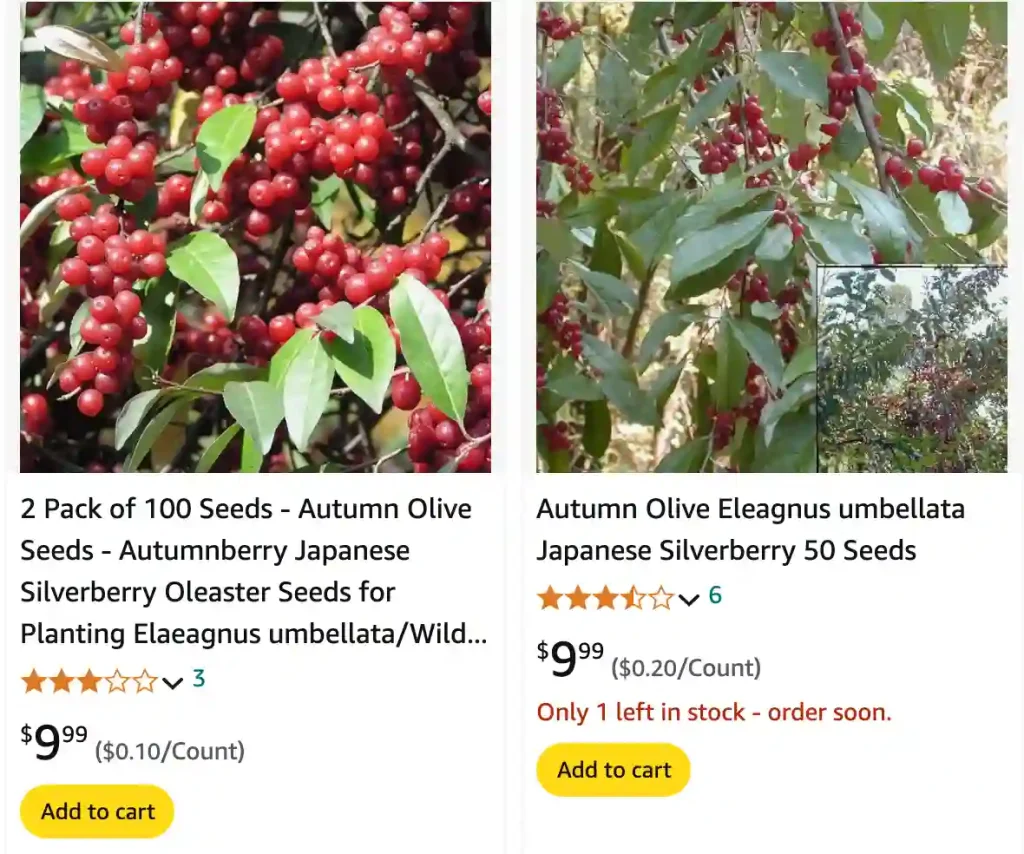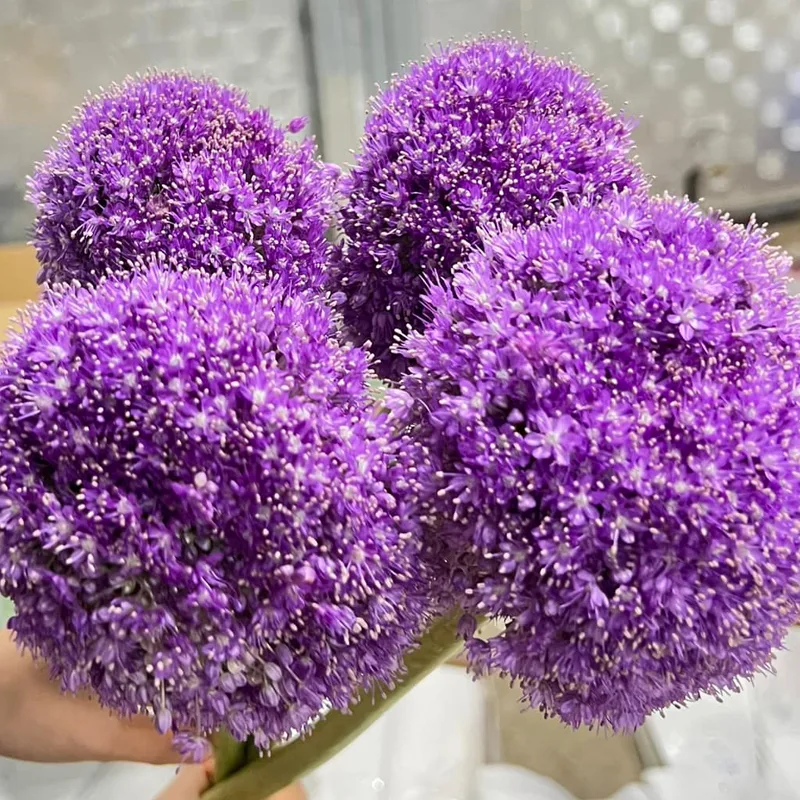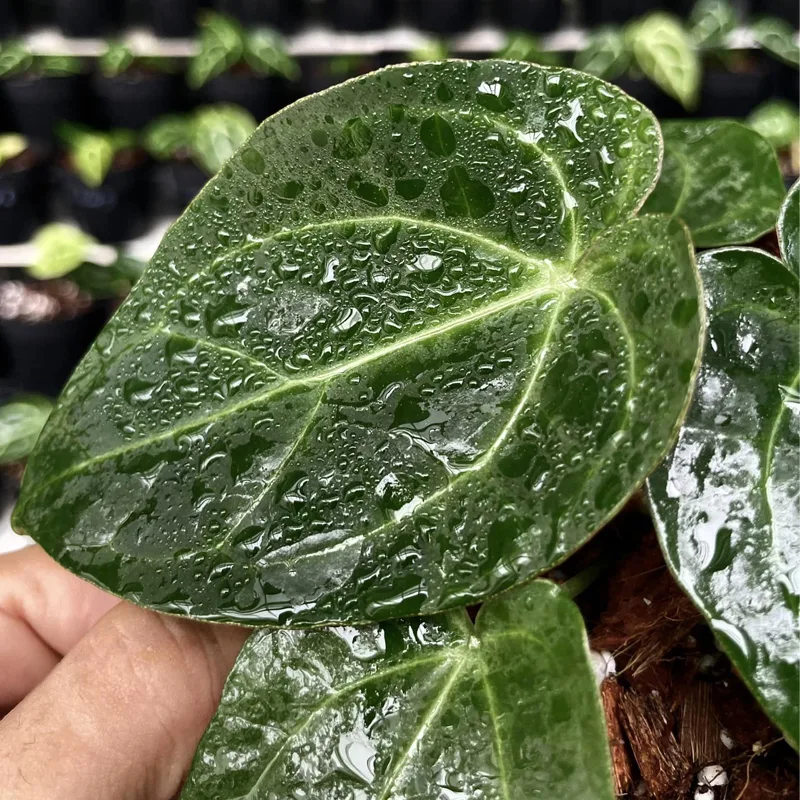
FAQs About Autumn Olive
Autumn Olive, scientific know as Elaeagnus Umbellata, is a plant that often raises a lot of questions, given its intriguing nature and sometimes controversial status. As someone who has navigated the complexities of this plant, I’ve gathered answers to the most common FAQs to shed light on what you need to know.
96 Species in Genus Elaeagnus
Is Autumn Olive Edible?
Yes, Autumn Olive is edible. The berries, which ripen in late summer to fall, are a tangy treat. They can be eaten raw, although they might be a bit tart for some tastes. Many people use the berries to make jams, jellies, and sauces. They’re also rich in vitamins and antioxidants, making them a nutritious addition to your diet. However, due to their high acidity, consuming them in large quantities might not be pleasant for everyone.
How to Get Rid of Autumn Olive?
Getting rid of Autumn Olive can be challenging because it’s an invasive species. To effectively manage it, consider the following methods:
- Manual Removal: For smaller infestations, you can pull out the plants by hand. Ensure you remove all the roots to prevent regrowth.
- Cutting and Herbicide: For larger infestations, cutting the plant down to the ground and applying a systemic herbicide like Roundup can be effective. Be sure to follow up with additional treatments as needed.
- Grazing: Goats are known to graze on Autumn Olive, which can help control its spread. However, this method might not be practical for everyone.
Are Autumn Olive Berries Poisonous?
Autumn Olive berries are not poisonous. They are edible and can be consumed by humans and animals alike. However, if you’re consuming them in large quantities or if you have specific allergies, it’s always good to proceed with caution and consult a healthcare provider.
Is Autumn Olive Invasive?
Yes, Autumn Olive is considered invasive in many areas. It was introduced to North America in the 1830s for its ornamental value and soil erosion control. However, it quickly spread and began outcompeting native vegetation, which has led to its designation as an invasive species.
What Are Autumn Olives?
Autumn Olives are small deciduous shrubs known for their silver-gray leaves and clusters of small, reddish berries. They belong to the Elaeagnaceae family and are native to Asia. These shrubs are valued for their rapid growth and ability to fix nitrogen in the soil, but they often disrupt local ecosystems.
Do Deer Eat Autumn Olive?
Yes, deer do eat Autumn Olive. The plant is relatively deer-resistant compared to others, but in areas where deer populations are high, they may browse on the leaves and berries.
How to Identify Autumn Olive?
Identifying Autumn Olive is fairly straightforward. Look for a bushy shrub that grows between 10 to 15 feet tall. The leaves are alternate, elliptical, and covered with silver scales. In fall, the plant produces clusters of small, red berries.
When Are Autumn Olives Ripe?
Autumn Olives are ripe in late summer to early fall. The berries turn from green to red and are ready to harvest when they have a deep, rich color and a slightly soft texture. Ripe berries are usually collected from September through October.
Will Crossbow Kill Autumn Olive?
Yes, Crossbow, a selective herbicide, can be effective in killing Autumn Olive. It works well on woody plants and is often used in combination with mechanical removal methods to manage invasive species.
Will Roundup Kill Autumn Olive?
Roundup, a non-selective herbicide, can kill Autumn Olive. It is effective in killing most plants it contacts, including Autumn Olive. Apply it directly to the cut stems or foliage for best results, and be cautious about potential impacts on surrounding plants.
Does Autumn Olive Have Thorns?
Autumn Olive does not have thorns. It is distinguished by its smooth, silver-scaled leaves and small, red berries. If you’re encountering a thorny plant, it is likely a different species.
How Did Autumn Olive Come to America?
Autumn Olive was introduced to the United States in the 1830s as part of soil erosion control efforts and for its ornamental value. It quickly spread and became invasive due to its ability to outcompete native plants.
Autumn Olive vs. Russian Olive
Autumn Olive and Russian Olive are often confused due to their similar names and appearance. Both are invasive, but they belong to different genera. Autumn Olive (Elaeagnus umbellata) has red berries and is often found in shrubby forms, while Russian Olive (Elaeagnus angustifolia) has yellow berries and grows as a small tree or large shrub.
Autumn Olive vs. Honeysuckle
While both Autumn Olive and Honeysuckle are invasive, they differ significantly. Honeysuckle (Lonicera spp.) often has tubular flowers and sweet-smelling nectar, whereas Autumn Olive has silver leaves and small, red berries. Honeysuckle is generally more aggressive in moist conditions, while Autumn Olive thrives in a variety of soil types.
Autumn Olive vs. Buckthorn
Autumn Olive (Elaeagnus umbellata) and Buckthorn (Rhamnus spp.) are both invasive but have distinct differences. Buckthorn has dark berries and often has thorny branches, while Autumn Olive has red berries and smooth branches. Buckthorn tends to spread more aggressively in woodland settings compared to Autumn Olive.
Autumn Olive vs. Chokeberry
Autumn Olive and Chokeberry (Aronia spp.) are often confused due to their berry-bearing characteristics. Chokeberry has black or red berries and is known for its tartness, while Autumn Olive’s berries are red and have a more tangy flavor. Chokeberry is less invasive compared to Autumn Olive.
What is the Best Way to Manage Autumn Olive?
Effective management involves a combination of manual removal, cutting, and herbicide application. Regular monitoring and follow-up treatments are crucial to prevent regrowth and to protect native vegetation.
Understanding these aspects of Autumn Olive can help in managing its spread and utilizing its benefits while mitigating its impact on native ecosystems.
If i die, water my plants!



